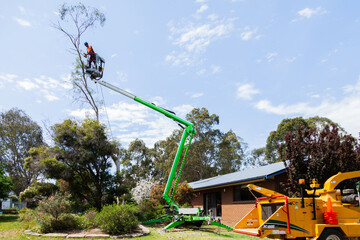Trees are more than just beautiful additions to a property. They provide shade, improve air quality, reduce energy costs, and create a peaceful environment. But to enjoy these benefits, trees require proper care and maintenance. Neglecting them can lead to disease, pest infestations, or even safety hazards. Learning the best ways to take care of trees ensures they stay strong, healthy, and long-lasting.

This article explores effective tree care methods, from watering and pruning to soil management and seasonal maintenance.
Why Tree Care Matters
Healthy trees are an asset to any home or community. They add value to properties, support local ecosystems, and create a welcoming outdoor space. On the other hand, poorly maintained trees can pose risks such as falling branches, root damage to structures, and decreased curb appeal.
Consistent tree care not only protects your landscape but also preserves the natural beauty of your environment for future generations.
Watering Trees the Right Way
Proper watering is one of the most important aspects of tree care. Young trees, in particular, need regular watering to establish strong roots. Mature trees, while more resilient, also require deep watering during dry periods.
Tips for watering trees:
- Water deeply and infrequently instead of shallow, frequent watering.
- Aim for the soil around the root zone, not just the trunk.
- Use mulch to help retain moisture in the soil.
- Avoid overwatering, as soggy soil can suffocate roots.
By ensuring your trees receive the right amount of water, you help them develop resilience against heat and drought.
Mulching for Tree Health
Mulch is an essential tool for tree care. It keeps soil moist, regulates temperature, and reduces weed competition. Organic mulch also enriches the soil as it decomposes.
Best practices for mulching:
- Spread mulch in a circle around the tree, extending out to the drip line if possible.
- Keep mulch a few inches away from the trunk to prevent rot.
- Apply 2–4 inches of mulch for maximum effectiveness.
Mulching not only improves tree health but also enhances the appearance of your landscape.
Pruning for Strength and Beauty
Pruning is more than just shaping a tree. It’s an important step in maintaining safety and promoting healthy growth. Removing dead, damaged, or diseased branches prevents decay and encourages a stronger structure.
Pruning tips:
- Trim during the dormant season for best results.
- Focus on removing weak or crossing branches.
- Avoid over-pruning, which can stress the tree.
- Use proper tools and techniques to make clean cuts.
Regular pruning helps trees grow in balance and reduces the risk of falling branches during storms.
Protecting Trees from Pests and Diseases
Like any living organism, trees are vulnerable to pests and diseases. Early detection is key to preventing serious damage.
Signs of trouble to watch for:
- Discolored or spotted leaves
- Premature leaf drop
- Holes in bark or leaves
- Dead branches
To protect your trees, inspect them regularly. Keeping them healthy with proper watering, pruning, and mulching also boosts their natural defenses. If problems arise, targeted treatments may be necessary to restore health.
Fertilizing for Growth
Trees rely on soil nutrients for growth, but sometimes the soil lacks essential minerals. Fertilizing provides the nutrients trees need to thrive.
Fertilizing basics:
- Test the soil before applying fertilizer to determine needs.
- Use slow-release fertilizers to prevent overfeeding.
- Apply in early spring or late fall for best results.
Balanced nutrition helps trees resist pests, withstand weather changes, and maintain vibrant foliage.
Seasonal Tree Care Tips
Different seasons require different approaches to tree care.
- Spring – Check for winter damage, prune dead branches, and fertilize if needed.
- Summer – Water deeply, mulch, and monitor for pests.
- Fall – Rake fallen leaves, prune lightly, and prepare for winter.
- Winter – Protect young trees with wraps, and avoid heavy pruning.
Adapting your care routine to the seasons ensures year-round tree health.
Protecting Tree Roots
Roots are the foundation of a tree’s health, but they are often overlooked. Protecting the root zone is vital for strong growth.
Root care tips:
- Avoid compacting soil around the base.
- Don’t park vehicles or place heavy objects near roots.
- Maintain a mulch layer to protect and nourish roots.
- Provide consistent water during dry spells.
Healthy roots mean a stable, thriving tree.
Benefits of Professional Tree Care
While many tree care tasks can be done at home, professional services can make a big difference. Experts have the training, tools, and knowledge to handle complex tasks like large-scale pruning, disease treatment, and safe tree removal.
Relying on professionals for advanced care ensures your trees remain safe, beautiful, and structurally sound.
Taking care of trees is not just about appearance—it’s about safety, sustainability, and long-term health. From watering and mulching to pruning and pest management, every step plays a role in helping trees flourish. By committing to regular care and seasonal maintenance, you can enjoy the beauty, shade, and environmental benefits of strong, healthy trees for years to come.
Whether you maintain them yourself or seek professional help, investing in proper tree care is one of the best ways to enhance your landscape and protect your natural surroundings.